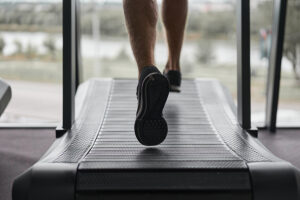When to See Our Foot & Ankle Specialist in Clarendon, VA

Foot and ankle pain are common signs of overuse, especially among athletes and other active individuals. In many cases, the discomfort resolves on its own after a few days of rest. But for severe pain that develops suddenly after trauma—or for moderate pain that persists and interferes with your daily activities—it’s important to seek professional medical attention. For instance, you may want to see Matthew Buchanan, MD, the foot and ankle specialist at Nirschl Orthopaedic Center near Clarendon, Virginia, if you experience:
Severe Pain After Rolling Your Ankle
You may have sustained a sprain if you twisted your ankle in a fall and overstretched one of the tough bands of tissue (ligaments) that stabilize it. In addition to pain, the symptoms of an ankle sprain include tenderness, swelling and numbness. A foot and ankle specialist can examine your painful ankle and order an X-ray to rule out a fracture, then suggest an appropriate treatment plan, which may include a boot, cast or physical therapy to promote proper healing.
A Clicking Sensation in Your Ankle
If you’ve injured your ankle and it seems to be clicking, you may have displaced a tendon and developed a condition known as peroneal tendon subluxation. The outer bone of your ankle has two peroneal tendons that prevent excessive side-to-side movement. Those tendons sit within a groove in the bone. If one of the tendons slips out of the groove, a painful clicking sensation may occur during movement. To stabilize your injured ankle, a foot and ankle specialist may recommend a brace or arch support along with a customized regimen of ankle-strengthening exercises.
Chronic Heel or Arch Pain
The most common causes of heel and arch pain are plantar fasciitis and Achilles tendinitis. Plantar fasciitis occurs when the thick ligament that connects your heel to your toes (plantar fascia) is irritated, while Achilles tendinitis occurs when the large tendon that connects the calf muscle to the heel bone (Achilles tendon) is inflamed. If your heel or arch pain persists beyond a few days, it’s important to see a foot and ankle specialist who can provide a tailored treatment to help prevent the condition from worsening. Some options include rest, stretching and strengthening exercises, custom orthotics, night splints and nonsteroidal anti-inflammatory drugs (NSAIDs).
A Foot Deformity
Many structural foot abnormalities—such as bunions, hammertoes, mallet toes, high arches, flatfeet and Haglund’s deformity—develop gradually over time. If you have a foot deformity that is causing you pain or impairing your mobility, a foot and ankle specialist can help you explore your conservative and surgical treatment options.
These are just a few examples of situations in which it may be appropriate to see a foot and ankle specialist. If you have questions, contact Nirschl Orthopaedic Center today to schedule a consultation with the foot and ankle specialist at our state-of-the-art sports medicine center near Clarendon, VA.
